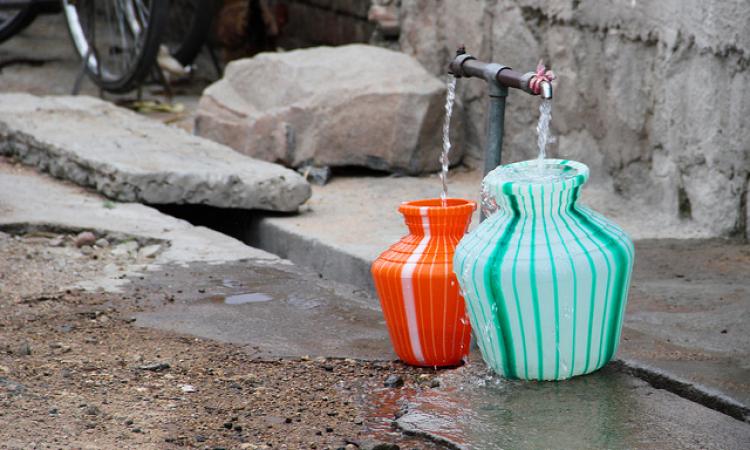
Availability of accurate data is crucial for monitoring the real progress of any initiative. The advance of an exercise as colossal as the Swachh Bharat Mission (SBM) cannot be audited and amended without regular monitoring and meticulous collection of relevant data. It is to this end, the Ministry of Statistics and Programme Implementation as part of the SBM Action Plan has brought out the ‘Swachhta Status Report’ to assess the country-wide progress in sanitation.
The SBM was successful in constructing over 58 lakh household toilets in 2014-15 against the 50 lakh individual latrines target. However, when it came to school and anganwadi toilets, the numbers had declined considerably. While the construction of individual household toilets is one of the main objectives of the Swachh Bharat Abhiyan, community sanitary complexes and liquid waste management form an integral part of the overall swachh framework.
Managing community toilets
85 million urbanfolk and slum dwellers in India lack access to proper sanitation. Despite the fact that community toilets could bridge the sanitation gap where individual household latrines do not exist, they remain rather unpopular, not just in urban pockets, but in rural India as well.
Getting people to embrace common toilets is not as easy as it may seem. While convoluted notions of pollution and purity keep people away from constructing toilets within their homes, public toilets throw up some very real hygiene issues that need to be tackled. Maintenance of public toilets has long remained a dead spot and not much has changed over the years. While most of the villages and wards used these toilets when present, two factors greatly influenced their functionality - cleanliness and water supply.
Out of the 3788 villages scrutinised, the survey found that only 13.1% of them had community toilets. The numbers were, however, much better in urban pockets. Out of the 2907 sample urban frame survey blocks, 42% of the wards were found to have community or public toilets.
Though the numbers are not astronomical, the mere presence of these complexes changes very little. Usage is key. And people are motivated to use them only when they find it more comfortable than the open fields they frequent. Of what use is a smelly, clogged toilet to someone who has the liberty to pick and choose a different spot that pleases him every day?
The survey revealed that in 54.9% of villages that had and used community toilets, panchayat appointed workers or contract staff were responsible for keeping them clean. In 17% villages, the residents took it upon themselves to keep the latrines clean while in 22.6% villages, toilets were not being cleaned.
In urban areas, community toilets were found to be better maintained with 73.1% of the toilets cleaned regularly by workers appointed by the local municipal bodies. Many Residents’ Welfare Associations were found to have actively involved themselves in keeping community assets tidy. In 12.2% wards, persons employed by RWAs were responsible for cleaning community toilets. Toilets were, however, orphaned in 8.6% wards where nobody took take care of them.
Results could be better if municipalities and city corporations were more vigilant. Tiruchirapalli City Corporation experimented with volunteerism and local initiative when it joined hands with city-based NGO Gramalaya to encourage women from local slums to care for their community saknitation complexes. The ladies took it upon themselves to make sure the facilities were well maintained, thereby ensuring the continued patronage of most fellow-residents. Favourable outcomes motivated the city corporation to try this out across the city. The scenario can very well be replicated in many of our crowded cities today where a huge chunk of the urban poor's sanitation infrastructure is rather gloomy, to say the least.
Water supply and toilet presence
With escalating preference for pour-flush toilets, sustained toilet use, both at the individual or community level, cannot be ensured in the absence of water.
At the household level, it is quite evident from the following graphs that the availability of water plays an important role in keeping the toilets functional. It comes as no surprise that the percentage of households having sanitary toilets in rural areas and number of households with access to water for use in toilets are in the same ball park - 45.3% and 42.5% respectively; that is 93.9% of households with toilets have access to water for use in them.
The same is true for urban households as well. Out of the 88.8% households with an individual latrine, 87.9% of them have water available for toilet use.
Usage can be ensured if the procedure for operation and maintenance is kept simple. And the pre-requisite for maintaining pour-flush toilets is, you guessed it right, water! Provisioning reliable water supply should precede construction to ensure sustained use.
Creating awareness about the need for improved personal and communal hygiene can never be over-emphasised. Mindless construction should not supersede genuine demand creation. While policies provide for information, education and communication (IEC) campaigns, these drives ought to be thoughtfully laid out so as to catch the attention of, and convince the prospective user. Whether it is the community or the household kind, unless users take ownership, there is no future for the humble latrine.
The Swachhta Status Report incorporates the results of the Rapid Survey on Swachhta Status conducted by the National Sample Survey Office (NSSO) during May-June 2015 in addition to illustrating the status of swachhta as depicted by the Census and surveys conducted in the past. The NSSO conducted the rapid survey alongside its regular 72nd Round (July 2014-June 2015) sample survey on diverse socio-economic aspects which it has been running since its inception in 1950. The survey covered all states, except Arunachal Pradesh and Tripura.